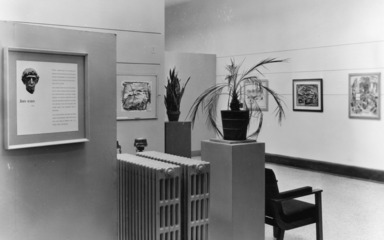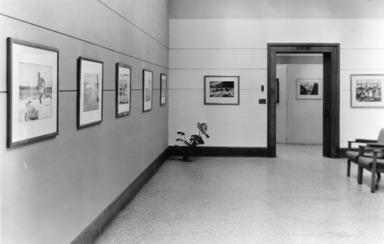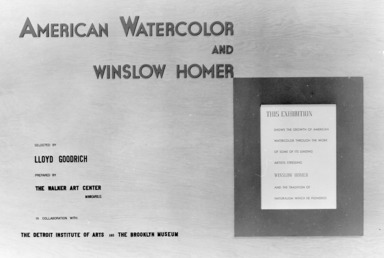

American Watercolors and Winslow Homer, May 16, 1945 through June 17, 1945 (Image: PSC_E1945i001.jpg Brooklyn Museum photograph, 1945)
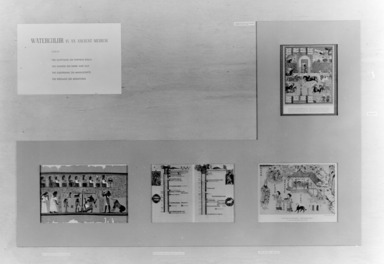
American Watercolors and Winslow Homer, May 16, 1945 through June 17, 1945 (Image: PSC_E1945i002.jpg Brooklyn Museum photograph, 1945)

American Watercolors and Winslow Homer, May 16, 1945 through June 17, 1945 (Image: PSC_E1945i003.jpg Brooklyn Museum photograph, 1945)
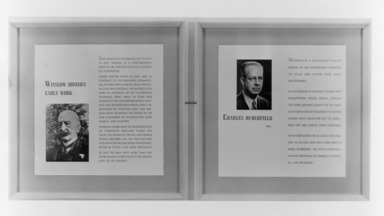
American Watercolors and Winslow Homer, May 16, 1945 through June 17, 1945 (Image: PSC_E1945i004.jpg Brooklyn Museum photograph, 1945)
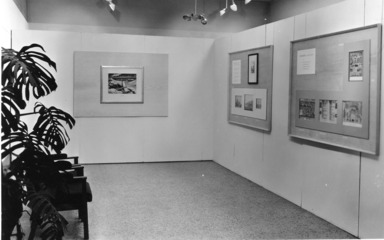
American Watercolors and Winslow Homer, May 16, 1945 through June 17, 1945 (Image: PSC_E1945i005.jpg Brooklyn Museum photograph, 1945)

American Watercolors and Winslow Homer, May 16, 1945 through June 17, 1945 (Image: PSC_E1945i006.jpg Brooklyn Museum photograph, 1945)
American Watercolors and Winslow Homer
-
May 16, 1945
The Brooklyn Museum opens to the public today an exhibition called “American Water Color and Winslow Homer.” Consisting of over seventy paintings, the show is installed in the Special Exhibition Gallery of the Museum through June 17. A preview for Museum Members and special guests took place yesterday afternoon.
The exhibition traces the tradition of naturalism in American water color painting from its origins in the early part of the 19th century to the present time. Water color was most widely used before the Civil War by the makers of colored prints, John J. Audubon being the outstanding artist of this group. The literal handling typical of the water colors of these artists is found also in paintings in this medium by members of the so-called Hudson River School (of which five are included in the show), although theirs was a more romantic point of view.
It was Winslow Homer, however, who in the post-Civil War period established water color as a medium equal in importance to oil. Since he was the founder of the naturalistic tradition in America as we know it today, Homer is fittingly represented in the exhibition by twenty-one paintings, fourteen of which are from his later period. The latter, with their fresh spontaneity of handling and their exploitation of the fullest possible transparency of the medium, may be seen to have had an enormous influence on the later artists whose work is featured in the show.
The water colors by Maurice Prendergast, while a reaction from Impressionism, carry on in a sense the bold simplicity of Homer’s art. Marin goes further than Homer in his reduction to its essence of natural form, but he continues Homer’s emphasis on the importance of the white ground to attain effects of sparkling brilliance. The graphic element implicit in so much of Homer’s work may also be found in the water colors by the contemporary artists Reginald Marsh and Adolf Dehn, while Burchfield uses water color in rich baroque forms never before found in work in this medium. The fifth of the living artists whose work is included in the show, Edward Hopper, has been called “the foremost representative today of the naturalistic style initiated by Homer,” and his work, with its crispness of touch and its emphasis on form as revealed and modeled by light, does indeed proclaim him as one of the ablest craftsmen in a medium which American artists have now made their own.
Accompanying the exhibition is a completely illustrated catalogue with a text written by Lloyd Goodrich, Research Curator of the Whitney Museum of American Art. Mr. Goodrich also made the selection of pictures included in the show, which has been previously exhibited at the Walker Art Center, Minneapolis, and at the Detroit Institute of Art.
In connection with this exhibition the Museum is showing on the fifth floor sixteen water colors by Winslow Homer from its permanent collection.
Brooklyn Museum Archives. Records of the Department of Public Information. Press releases, 1942 - 1946. 04-06/1945, 016-7.
View Original
